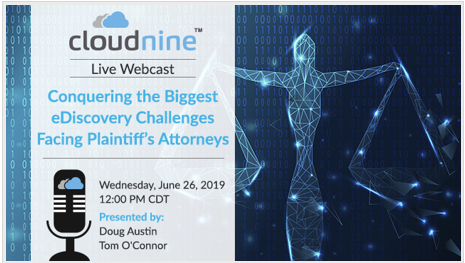Survey Says! Results of the ACEDS Community Survey: eDiscovery Trends
As part of its focus on offerings and opportunities that impact certifications, careers, contacts, and competence, the Association of Certified E-Discovery Specialists (ACEDS) recently conducted one of the more comprehensive online surveys of individuals currently working in the field of the eDiscovery that I’ve seen in a long time. So, what were some of the findings? Let’s take a look.
ACEDS posted Nineteen Observations on ACEDS in the Summer of 2019, written by Rob Robinson, editor of the excellent Complex Discovery blog and probably the unofficial survey king of eDiscovery. Rob posted those same observations on his blog here.
Notably, the survey was open between May 15, 2019, and June 3, 2019. The survey was conducted by an outsourced and primary research firm, Hanover Research, and was designed to provide insight into survey areas through the responses to approximately 250 questions(!) organized around six general ACEDS-related topics. Of those receiving invitations to participate, 149 eDiscovery professionals completed all 250 questions (I was one of those – kudos to ACEDS for generating so many responses to such a long survey). Partial responses to the survey were not tabulated as part of the survey results, and the reward for full survey completion was $20 directed by respondents to one of three charities.
Here are a few of the observations from the survey:
- 93% of ACEDS Community Survey respondents were aware of the Certified E-Discovery Specialist (CEDS) certification, with 80% of these respondents being very familiar or extremely familiar with the CEDS certification.
- The ACEDS Blog was noted as a primary source of legal news and thought leadership information by 79% of survey respondents.
- Unsurprisingly given the target audience of the survey, 75% of respondents shared that they were current members of ACEDS. Additionally, 35% of respondents noted Women in eDiscovery (WiE) as the most common non-ACEDS membership to possess among presented legal industry groups.
- 84% of respondents shared that they have a positive impression of ACEDS, and one-third of respondents noted that the reason for the positive impression was ACEDS educational content and certification course materials.
- In considering the frequency respondents use skills acquired from certifications in their work, security-related certifications appeared to be the most utilized certification skills with 91% of respondents with security-related certifications reporting that they always use the skills related to that certification in their work. Also, 58% of respondent CEDS certificate holders noted that they always use CEDS-related skills in their work.
- Only 7% of respondents shared that eDiscovery was taught as part of their law school or paralegal school curriculum. With just under two-thirds of that teaching (64%) being teaching as part of a course dedicated to eDiscovery.
- 89% of ACEDS Community Survey respondents reported an increase in compensation during the last five years and 77% reported an increase in job offers.
- 69% of survey respondents attended at least one industry professional development conference during the past year, with LegalTech NY, Relativity Fest, and ILTACON being the most attended conferences. 32% of respondents noted attending LegalTech NY, 24% of respondents noted attending Relativity Fest (Chicago or London), and 20% of respondents noted attending ILTACON.
These are just a few of the published results, check out the article for more. Also, speaking of surveys, Rob launched the Summer 2019 eDiscovery Business Confidence Survey over the weekend, so you can participate in that one too. I’ll cover the results of it in a few weeks as I have the previous surveys over the past 3+ years.
So, what do you think? Are you surprised by any of the ACEDS survey results? As always, please share any comments you might have or if you’d like to know more about a particular topic.
eDiscovery Daily will return next Monday. Happy Independence Day!
Sponsor: This blog is sponsored by CloudNine, which is a data and legal discovery technology company with proven expertise in simplifying and automating the discovery of data for audits, investigations, and litigation. Used by legal and business customers worldwide including more than 50 of the top 250 Am Law firms and many of the world’s leading corporations, CloudNine’s eDiscovery automation software and services help customers gain insight and intelligence on electronic data.
Disclaimer: The views represented herein are exclusively the views of the author, and do not necessarily represent the views held by CloudNine. eDiscovery Daily is made available by CloudNine solely for educational purposes to provide general information about general eDiscovery principles and not to provide specific legal advice applicable to any particular circumstance. eDiscovery Daily should not be used as a substitute for competent legal advice from a lawyer you have retained and who has agreed to represent you.









